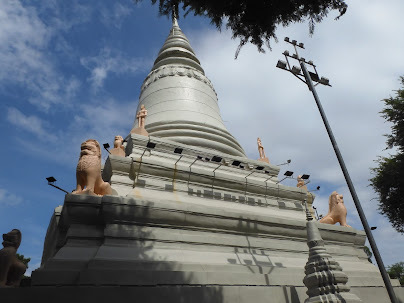Our First Two Stops - Cambodia blog entry #4
Though Sunday, September 15, was our firstfull day in Cambodia, it wasn’t until Monday that we actually got out andstarted experiencing things on the ground, instead of riding by in our tuk tuk.
First though, here’s a picture of our tuktuk, in case you were wondering what it really is. I’ll post a blog about allthe different ones we rode in during our two-week trip, but this is the one weused in Phnom Penh. Our driver was a sweet man named Wo-Tea. He didn’t knowmuch English, but K was almost always with us and otherwise pointing, handgestures, and the few words we knew in common worked.
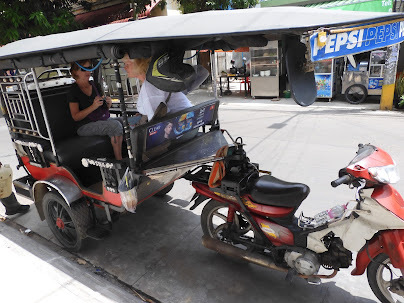
We went to Central Market first. What amaze, filled with hundreds of vendors, hawking everything from watches to silksto fruits to fish. Also called Phsar Thmei, it’s a massive, mostly-indoorshopping center, which has everything you could want to buy.
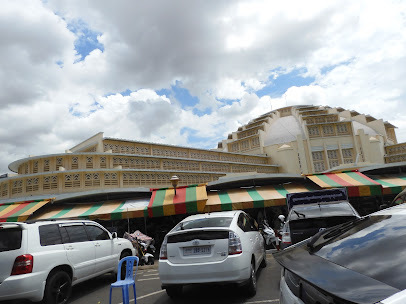
Built in 1937, in the art deco style, by aFrench architect, it is a bright yellow building with an 85-foot-high centraldome, with four tall arch-roofed arms branching out diagonally across theblock. In between each of those halls, is an opening for more vendor’s stalls leadingout to the street. (I plucked this photo from Google, full credit to whoevertook it. I hate borrowing pictures from the internet, but I left my drone athome.)
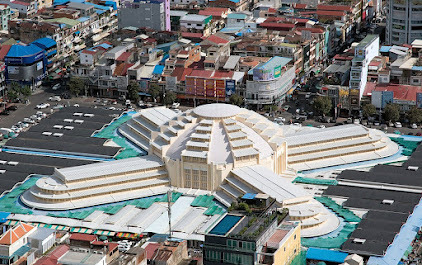
Supposedly when it was built, thearchitect designed it with open air windows at the top, which were intended toallow air currents throughout the building to cool it. It didn’t feel like thatwas working to me. But the architecture was beautiful.
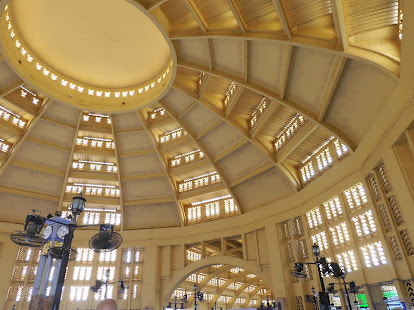
Just like in Kenya, you can't even stop tolook at something without being pressured by the vendors. First stall westopped at I bought a scarf for four dollars, because I knew I wanted one. Thenwe wandered. D and I separated, and I couldn't find the way back to where we hadcome in. It's arranged like a wheel with eight spokes and after a while theyall look the same. Finally found my way out, and they were all waiting for me.
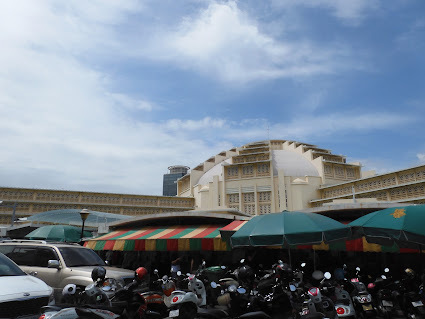
Next stop was Wat Phnom temple, a Buddhisttemple (which are called wats). It is the tallest religious structure in thecity, with a total height of 150 ft.
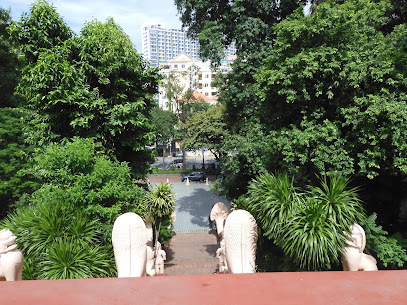
It is a historical site that is part ofthe Khmer national identity. The pagoda is named after Lady Penh from the storyof the discovery of the five statues: four Buddha statues and one Vishnustatue.
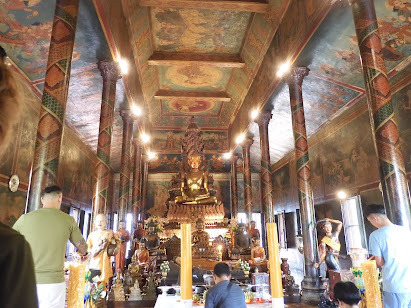
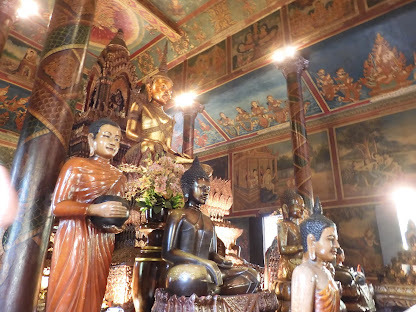
Set on top of a tree-covered knoll, WatPhnom is on the only hill in town. According to legend, the first pagoda onthis site was erected in 1373 to house four statues of Buddha deposited here bythe waters of the Mekong River and discovered by a woman name Penh. The mainentrance to Wat Phnom is up the grand eastern staircase, which is guarded bylions and naga (snake) balustrades.
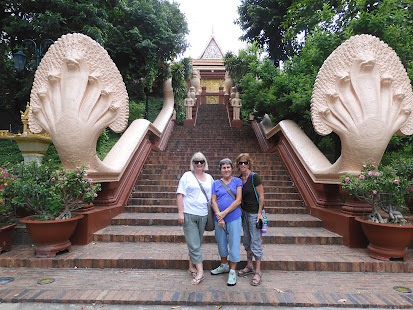
We saw hundreds of pagodas throughout Cambodia.A pagoda is a tiered building with multiple eaves and ornate details, that is often usedfor religious purposes. Pagodas are common in many parts of Asia, including India,China, Japan, and Thailand. They are often Buddhist and can also serve ascommunity venues, schools, and places for sharing knowledge.
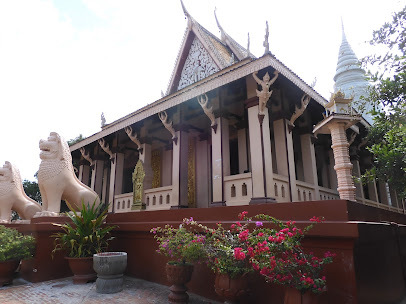
This is the stupa of Ponhea Yat who wasthe last king of the Khmer Empire and the first Khmer king of the post-Angkorperiod, from 1421until his death in 1463. A stupa is a steeple-shaped mausoleumholding the bones and ashes of the deceased, usually placed around the groundsof a pagoda. They can be made of sandstone, laterite, brick, and more recentlyof cement, and some are huge.
